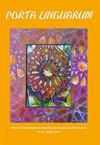Physical Education and English learning: perceptions of students participating in a CLIL program
IF 2.1
4区 教育学
Q3 EDUCATION & EDUCATIONAL RESEARCH
引用次数: 0
Abstract
Content and Language Integrated Learning (CLIL) is an innovative approach that integrates language learning with content-based instruction in a variety of subjects including physical education and tactical learning of sport. This paper aims to explore the benefits of combining these two subjects in the classroom and how it can lead to a more dynamic and effective learning experience for students. A total of 32 students (22 males/10 females) with a mean age of 16.62 years (SD = 0.5) took part. Students completed weekly reflective entries in their personal diary. In addition, two focus groups were conducted with a total of 12 students each. Considering the nature of this research, the qualitative method was chosen to gather and analyze the data, using NVivo (version 12 QSR International). Three main themes emerged: 1) Visual material to improve language learning and comprehension, 2) Learning English during the practice of physical exercise and 3) Lack of Balance among the 4 Cs of CLIL. CLIL is an effective approach to integrating language learning with content-based instruction in physical education and tactical learning of sport. It is essential to implement some strategies to capture the attention of students while they are involved in the activities.体育教育与英语学习:学生参与CLIL课程的认知
内容和语言综合学习(CLIL)是一种创新的方法,它将语言学习与各种学科的基于内容的教学相结合,包括体育教育和运动战术学习。本文旨在探讨将这两门学科结合在课堂上的好处,以及它如何为学生带来更有活力和更有效的学习体验。共32名学生(男22 /女10),平均年龄16.62岁(SD = 0.5)。学生们在他们的个人日记中完成了每周的反思条目。此外,还进行了两个焦点小组,每个小组共12名学生。考虑到本研究的性质,我们选择了定性的方法来收集和分析数据,使用NVivo (version 12 QSR International)。三个主要的主题出现了:1)视觉材料提高语言学习和理解,2)在体育锻炼的实践中学习英语,3)在CLIL的4c之间缺乏平衡。CLIL教学法是体育教学和体育战术学习中语言学习与内容教学相结合的有效途径。在学生参与活动时,实施一些策略来吸引他们的注意力是至关重要的。
本文章由计算机程序翻译,如有差异,请以英文原文为准。
求助全文
约1分钟内获得全文
求助全文
来源期刊

Porta Linguarum
Social Sciences-Education
CiteScore
1.70
自引率
16.70%
发文量
51
期刊介绍:
PORTA LINGUARUM is an international and interuniversity journal that specialises in foreign language didactics. Its aims to publish empirical studies, critical revisions, and theoretical models that relate to the many factors that influence the FL teaching and learning:
- The social and school context: the family’s social and cultural influence as well as the student’s mother language and its influence on the L2 learning process, etc.
- The students: their personal characteristics (age, gender, personality traits, etc.) as well as their attitudes, motivation, cognitive styles, etc.
- The FL teacher: the teacher’s mental representations, attitudes, motivation, individual characteristics, teaching methods, etc.
- Learning conditions and the learning process, variables that influence the teaching and learning processes in the classroom: efficiency of teaching strategies, teaching methods and techniques, second language acquisition processes, students and teachers interaction, effect of teaching resources and materials, etc.
- Learning outcomes: evaluation of procedures as well as the evaluation of the students’ communicative competence at different academic levels, etc.
 求助内容:
求助内容: 应助结果提醒方式:
应助结果提醒方式:


